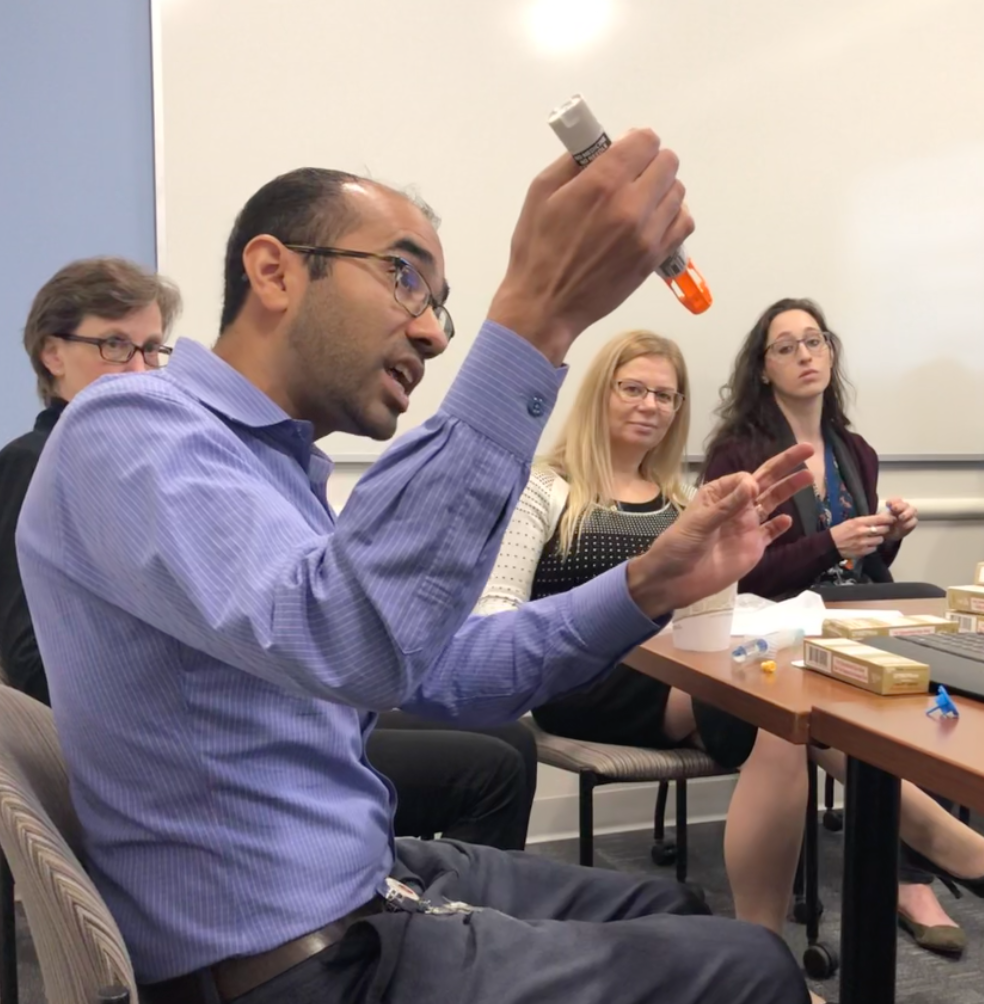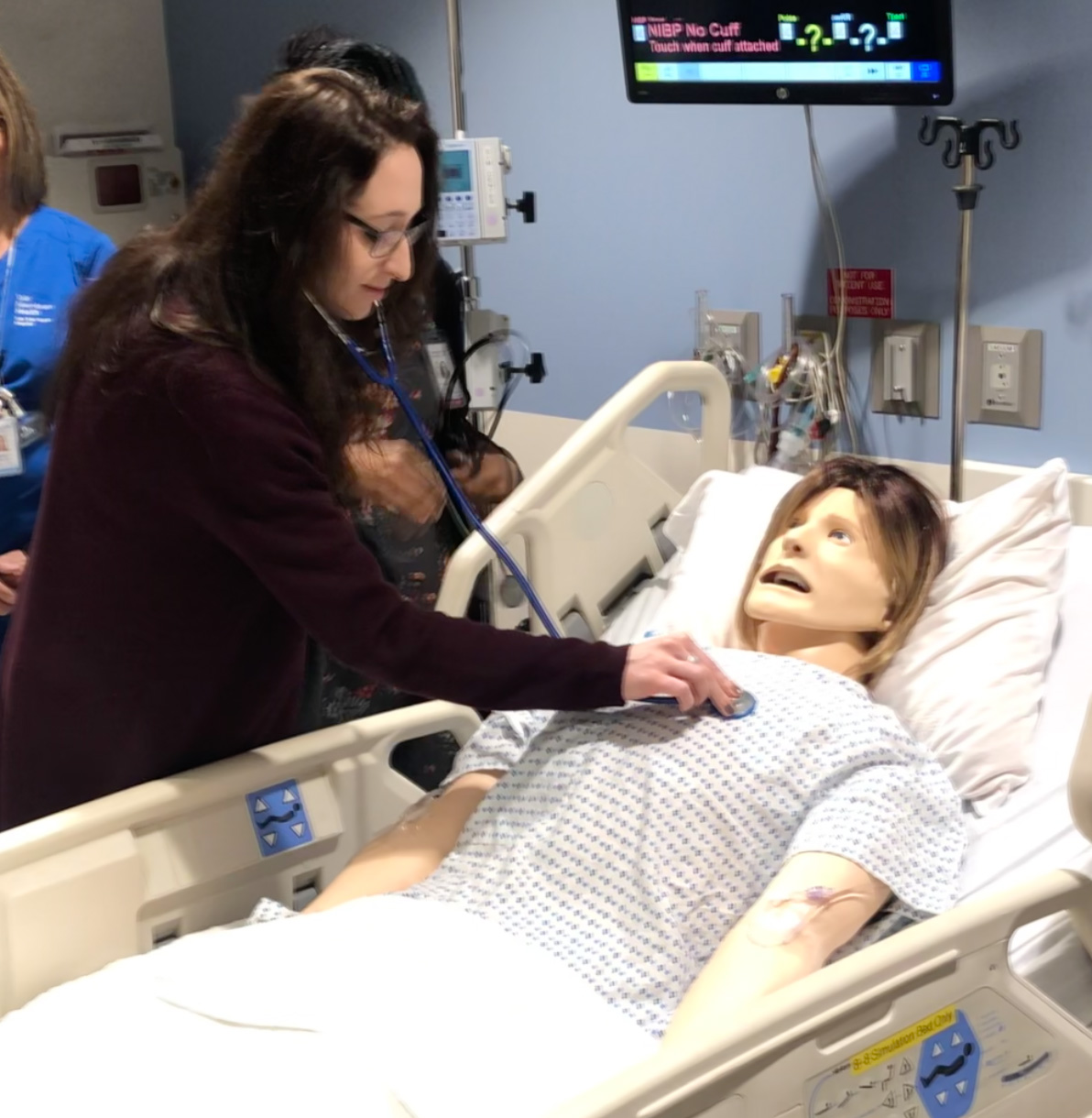During his radiology residency training in Boston, Jay Pahade, MD, learned a lot from a co-resident who was supervising a CT scan with intravenous contrast when things went horribly wrong. The 30-year-old patient had an adverse reaction to the contrast agent and needed epinephrine to help her breathe. But after receiving the wrong concentration of epinephrine, she suffered a heart attack and the case went to litigation. The patient survived, but Dr. Pahade carried the memory of the crisis with him as he completed his training and began his practice.
After joining the Department of Radiology & Biomedical Imaging at Yale School of Medicine (YSM) in 2011, Dr. Pahade developed a program to train radiologists and radiology residents, fellows, and nurses to recognize contrast reaction in patients and to provide prompt care with the correct treatment.

Dr. Pahade, associate professor of Radiology & Biomedical Imaging at YSM, and the department’s vice chair for quality and safety, and his team, train 200 health care workers each year, including 150 radiologists, radiology residents and fellows, and 50 nurses. The hands-on training takes place in the SYN:APSE Simulation Center on the campus of Yale New Haven Hospital. Dr. Pahade also is the medical director for radiology quality & safety for the Yale New Haven Health System.
“Contrast reactions are one of the rare events in the radiology department that can cause patient death,” Dr. Pahade said. “You might have one anaphylaxis reaction in your entire career, but because it can have such a profound impact, I feel the training is worthwhile.”
During the training, Pahade and his team use a mannequin as a stand-in for a patient experiencing allergy-like symptoms after receiving a contrast agent, such as an iodine-based agent used for a CT scan or a gadolinium-based agent used for a magnetic resonance (MRI) exam. Contrast agents are used to enhance the quality of the images.
The training for a small team of radiology staff begins when Dr. Pahade or another facilitator provides a brief history and course of events, similar to what radiology technologists do when a radiologist responds to a call for help. A specialist from the simulation center manipulates the mannequin’s reaction from behind a one-way mirror. The mannequin might appear to be short of breath, or its tongue might swell, simulating an adverse reaction that can be mild, moderate or severe. The vital signs and physical exam findings can change just like a patient in real life during the course of a reaction. The simulation center staff speaks to the team through speakers in the room so a conversation occurs between the treating providers and the “patient.”

“The mannequin might have a scratchy throat, or say, ‘I feel my throat closing up,’” said Jennifer Arango, MPH, senior program manager for radiology & biomedical imaging at YSM. “The people being trained know they need to give a nebulizer, but do they know how to do it?” Arango said. “Do they pour the Albuterol into the apparatus first, or do they turn on the oxygen first? And when it is time to give epinephrine, is the right dose and route of administration performed accurately? These are the steps we take them through.”
When an adverse reaction occurs, it’s important for the team members to communicate, said Jannatun Sikder, MD, a second-year radiology resident and one of the program’s facilitators. “Through the training we learn the collaborative skills necessary to work in an emergent situation and to not be afraid to step up and assign roles,” noted Dr. Sikder.
“This is a supportive environment for learning where making a mistake won’t affect the quality of someone’s life,” Dr. Sikder added. “It allows us to familiarize ourselves with the equipment to prevent us from blindly looking for things or trying to learn to correctly attach equipment in an emerging crisis. When your adrenaline is running, having a working motor memory can be helpful.”
The purpose of the training is to stabilize the patient so they can be moved to the emergency room. “We have to recognize the reaction and its severity, and promptly administer the correct treatment until the patient can get to a higher acuity place to manage them,” Dr. Pahade said.
Dr. Pahade and other medical professionals have learned from the aviation industry how to mitigate dangerous, albeit rare, events. “You can’t crash planes to train pilots, so you have to find a better way to practice low-frequency events that have a high impact. High-fidelity simulation training fills that niche,” Dr. Pahade said.
“Contrast reactions are nerve-wracking events that cause panic for both patients and responding providers. I often joke that the radiologist’s pulse is usually faster than the patient’s,” Dr. Pahade said.